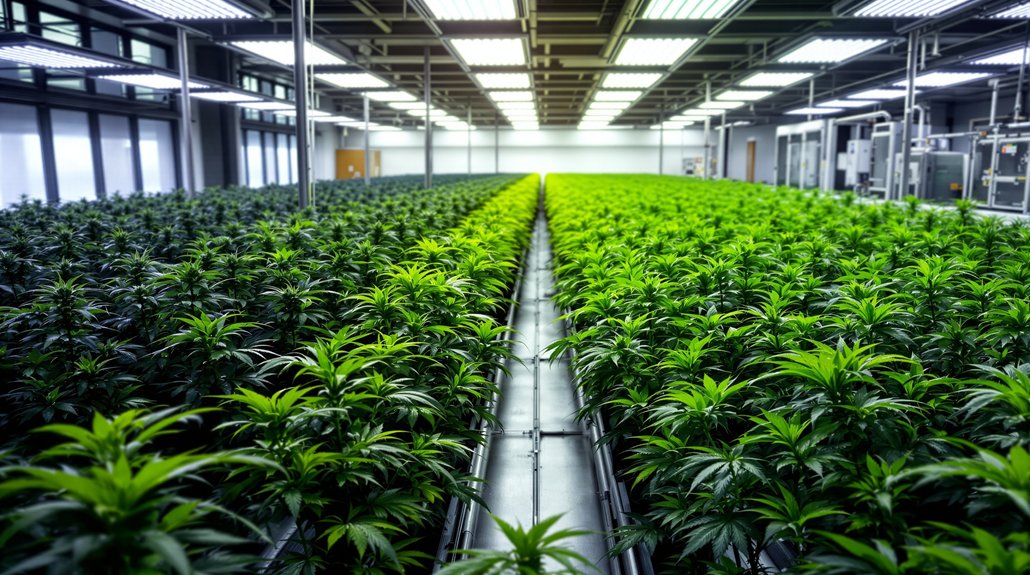Within twelve months of launching recreational marijuana sales, Ohio has shattered industry expectations by generating $702.5 million in adult-use cannabis revenue, a figure that exceeded projections by more than $52 million. The Buckeye State’s entry into recreational cannabis between August 6, 2024, and August 2, 2025, marks a resounding success that positions Ohio as the 24th state to embrace adult-use marijuana sales.
Ohio’s explosive $702.5 million first-year recreational cannabis performance shattered industry projections by over $52 million, establishing remarkable market success.
The numbers tell a compelling story of consumer demand. Ohioans purchased over 109,706 pounds of cannabis during the first year, with recreational buyers acquiring twice as much product as medical marijuana patients. Dispensaries averaged approximately $1.8 million in daily recreational sales statewide, demonstrating consistent market appetite. The average recreational marijuana price settled at $6.63 per gram by late July 2025.
Ohio’s marijuana journey began with medical legalization in 2019, which has generated over $2 billion since inception. Recreational legalization arrived through Issue 2, approved by 57% of voters in November 2023. The combined medical and recreational markets could surpass $1 billion by the end of 2025, with medical sales projected at $481 million. Similar to Thailand’s booming market, Ohio’s rapid growth demonstrates how legalized cannabis can significantly contribute to a state’s economy.
Currently, 159 dispensaries hold licenses to sell both medical and recreational cannabis, with 153 dual-use outlets operational by mid-2025. These establishments sold over 4 million units of manufactured cannabis products in 2024, while the state recorded distribution of 32,487 pounds of cannabis plant material. Unlike some states, Ohio maintains no cap on dispensary licenses. However, business owners are discovering that revenue generation does not automatically translate into profitability as they navigate rapid expansion challenges.
Tax revenue flows through a structured system featuring a 10% excise tax plus 5.75% state sales tax, with potential additional municipal or county levies. The allocation distributes 36% each to the Cannabis Social Equity and Jobs Fund and Host Community Cannabis Fund, 25% to substance abuse and addiction services, and 3% to regulatory operations. This framework guarantees tax dollars support community programs, equity initiatives, and addiction services. The industry is creating jobs across cultivation, manufacturing, retail, and ancillary services.
Legislative challenges remain on the horizon. Lawmakers have debated but failed to pass restrictions on intoxicating hemp products containing delta-8 or delta-9 THC. Since Ohio’s marijuana law emerged from citizen initiative rather than constitutional amendment, legislators retain authority to modify regulations. Social equity licensing expansion has stalled, with efforts to add permits through equity programs showing little progress.
The regulatory landscape continues evolving as lawmakers review existing statutes. Municipal restrictions create variability in local retail access, while ongoing debates focus on tax structures and public health safeguards. Ohio’s explosive first-year performance suggests the state’s cannabis market has found solid footing despite regulatory uncertainties.










